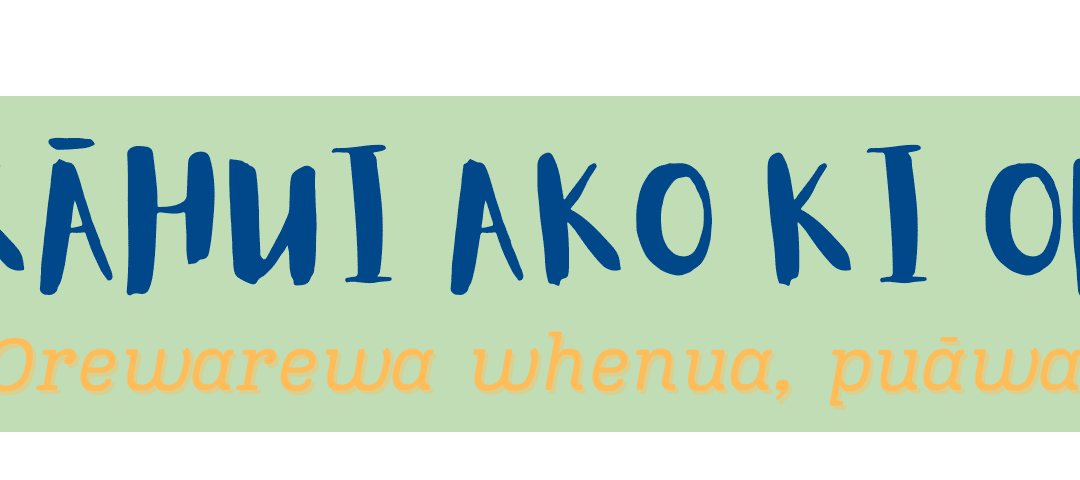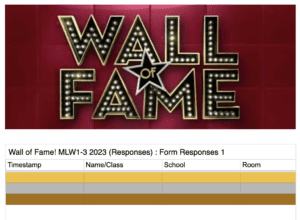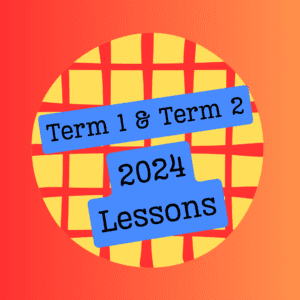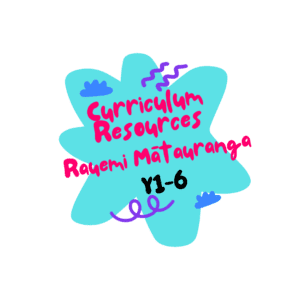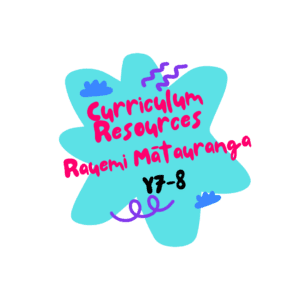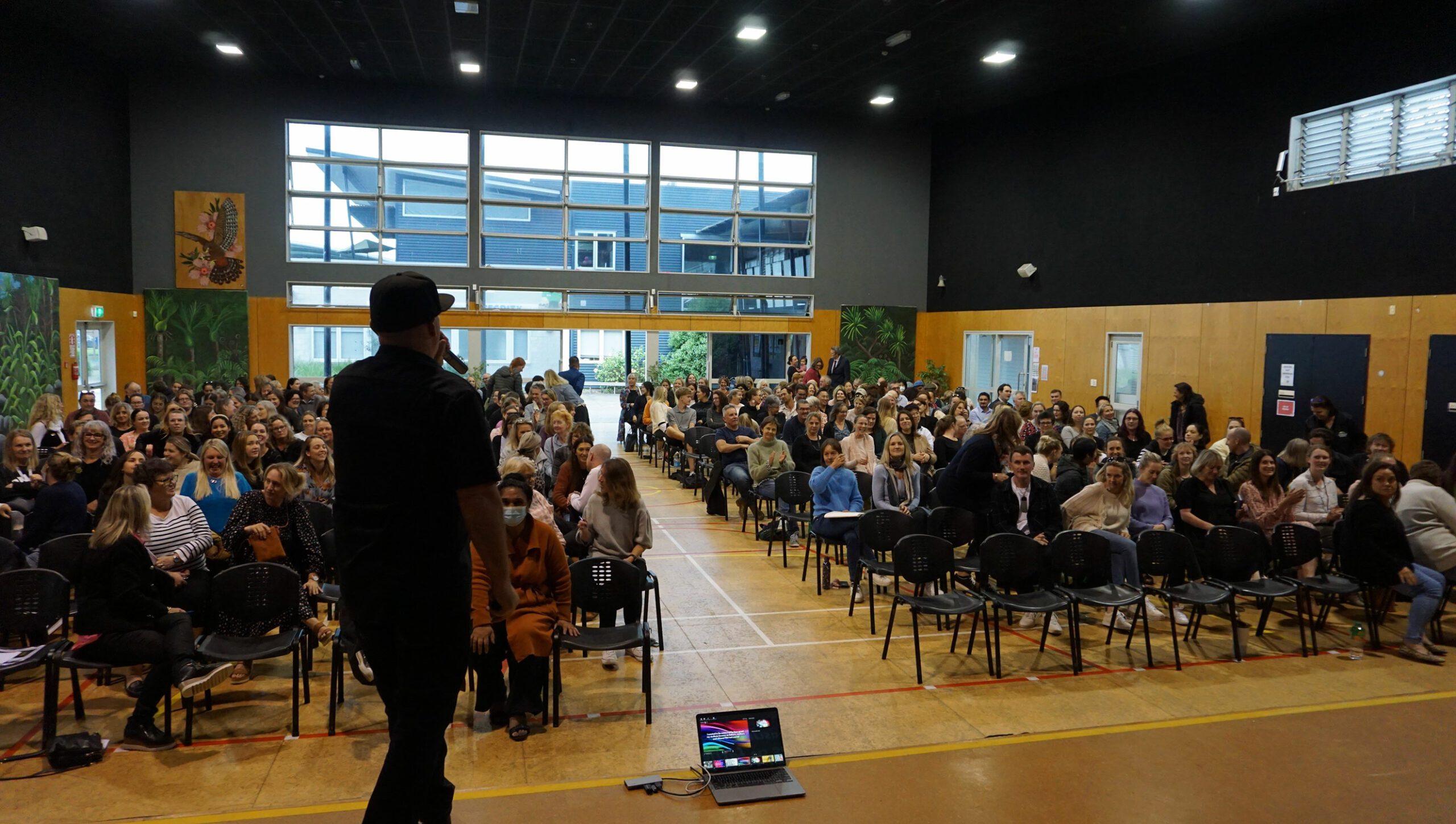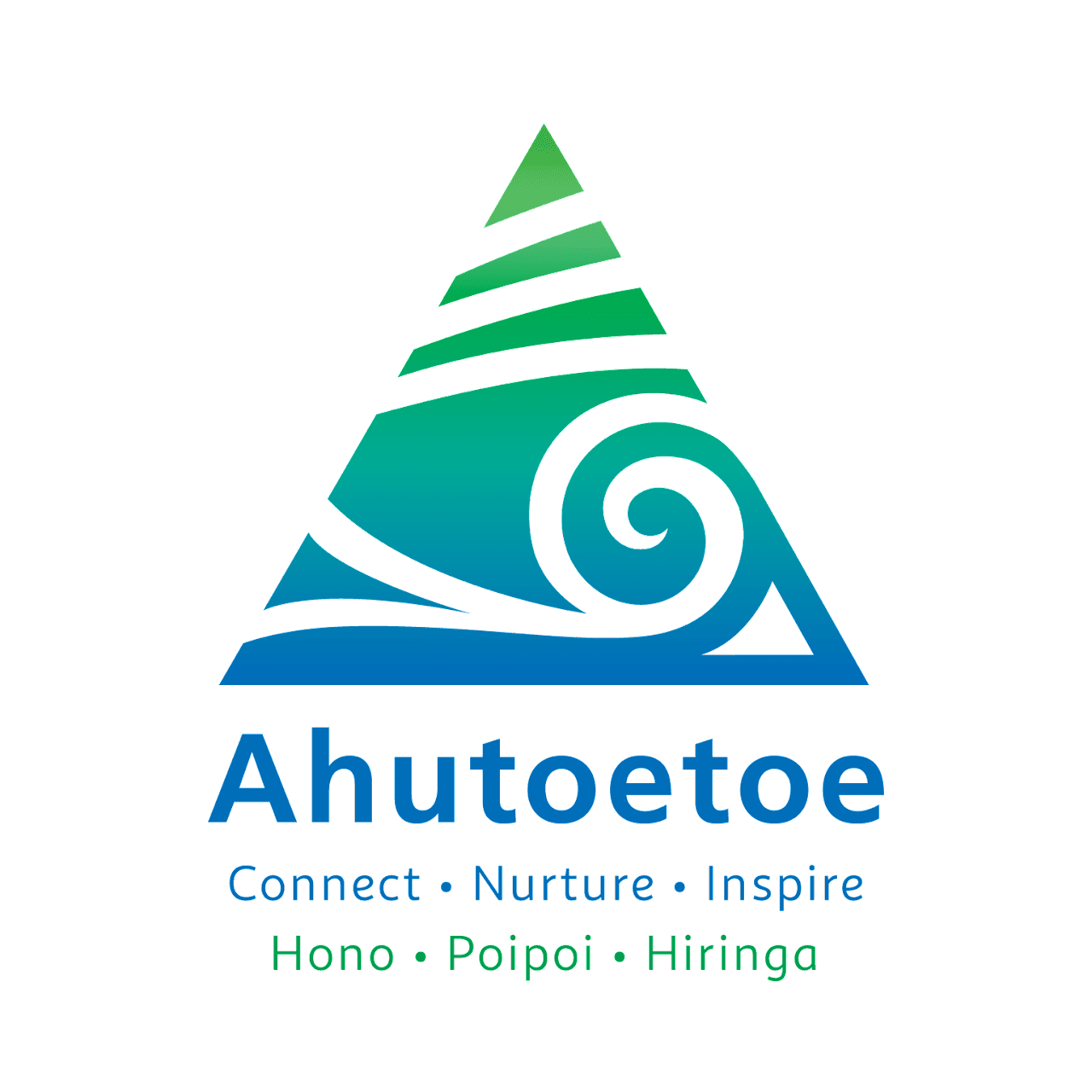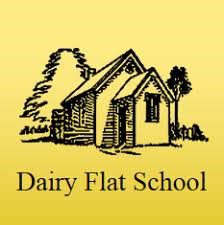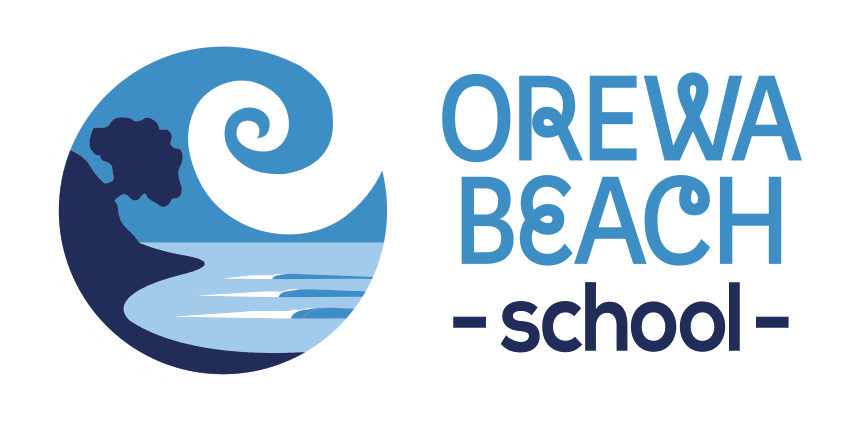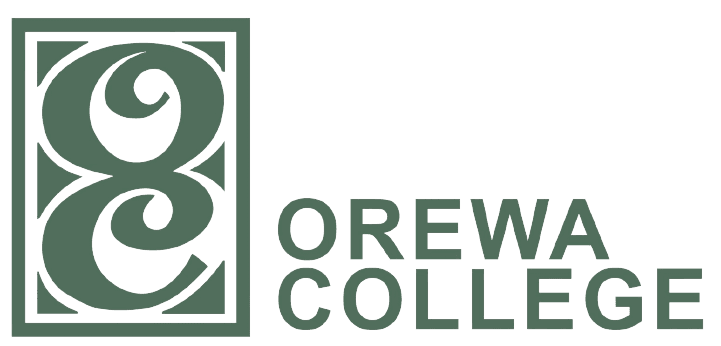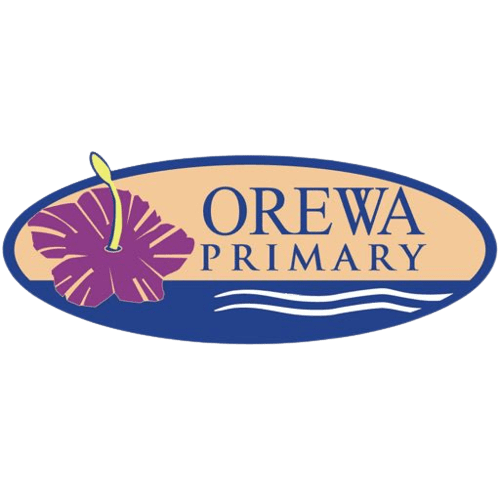Rāmere, te 15 o te Hepetema 2023
Orewarewa whenua, puāwai māhuri
On the fertile ground of Orewa, the sapling blooms
Competition – Each week we will have a competition. One lucky winner will receive a $20 Millie’s Coffee voucher! It’s simple, just email your answer to [email protected]
Congratulations to Alex Franklin this week’s winner!
This Week’s Question/Pātai o te Wiki: What does the kīwaha/colloquium
“Wetiweti ana” translate to?
Have something to share? Get in contact with one of our Across School Leaders – we would love to hear from you!
[email protected] Te ao Māori
[email protected] Hauora
[email protected] Future Ready
[email protected] 21st Century Learning
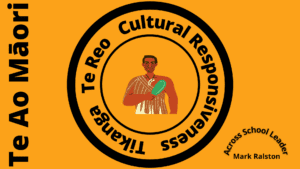
Kemu Hou / New Game for Te Wiki o Te Reo Māori
Here is a fun new game you can use in your classroom today that your ākonga will love. It’s a two player hand game/kemu that helps to reinforce the prepositions runga/on or above and raro/under or below and the word taupoki/cover.
Start with hands stacked in the middle with clenched fists. Caller (Kaiako) can call one of three things:
- Runga (On top) – The bottom fist moves to the top
- Raro (under) – The top fist moves to the bottom
- Taupoki (Cover)
Hand on top when the caller (Kaiako) calls ‘Taupoki’ tries to grab the hand directly below (2nd in stack). If they are successful that person gets a point.
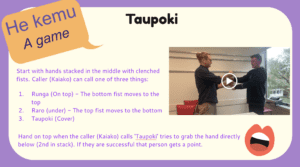
Follow this link to a slideshow with a supporting video.
Give it a go as a fun way to finish off Te Wiki o Te Reo Māori today and to add to your kete for the future.
Kia kaha te reo Māori!
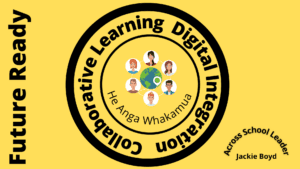
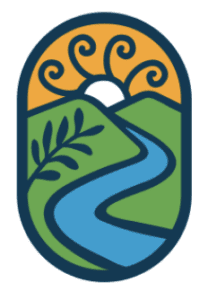
Lisa Everett from Nukumea Primary School talks about Digital Breakouts and Māori Language Week. Check out these resources below
This week we celebrated Te Wiki o Te Reo Māori. It’s a perfect week to merge this beautiful language and digital technologies! One activity you can try is the digital breakout.
Digital Breakouts are like escape rooms on the computer. Students have to find all of the clues around a website and the internet and enter them into a Google Form to ‘break’ all of the codes. Once they have solved all of the clues, the form lets them enter their name to get on to the ‘Wall of Fame’.

The Breakout uses Google Tools (including the website itself) to create the components. These include:
- Google Sites – the creation of the website

- Google Forms – to create the lock codes
- Google Sheets – for the ‘Wall of Fame’
Clues can come from anywhere – the possibilities are endless! For these Breakouts, I used Google My Maps to create the location map, Google Drawings for the ‘Māori Feelings Quiz’, and you can get very creative with conditional formatting in Google Sheets. With the ability to create links to external websites, you can send students on an epic learning journey.
Digital Breakouts are not just limited to Te Wiki o Te Reo Māori. You can create them in any subject!
Here are the links (including the answer sheets):
Year 1-3 https://sites.google.com/nukumea.school.nz/mlwbreakoutyear1-32023/home
Answers You Broke Out Worksheet MLW1-3 2023
Year 4-6
https://sites.google.com/nukumea.school.nz/mlwbreakoutyear4-62023/home
Answers – You Broke Out Worksheet MLW4-6 2023
Karawhiua Kāhui Ako!

Wetiweti ana! Wicked/Mean!
Weh-te-weh-te ah-nah
A classic kiwism that you can use in te reo Māori.
James: Check this out!
Julie: Wetiweti ana! Mean!

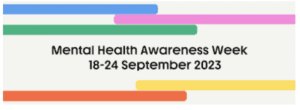
This year’s Mental Health Awareness Week theme is Five Ways, Five Days. Life has been a rollercoaster lately, with stress and overwhelm hitting us from all angles. We’ve faced uncertainty, unfamiliarity, and hardships that have left us with mixed emotions. That’s why we’re bringing you the Five Ways for the Five Days of MHAW, to give us a set of proven tools to boost our mental health when we need it.
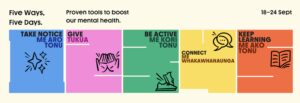
Take Notice | Me Aro Tonu – Monday
Take Notice refers to the practice of mindfulness. Mindfulness can be thought of as open and receptive attention to, and awareness of, what is occurring in the present moment.
Give | Tukua – Tuesday
Give refers to actions based on kindness, altruism, or generosity. Carrying out acts of kindness boosts our happiness, life satisfaction, and overall wellbeing.
Be Active | Me Kori Tonu – Wednesday
Widely recognised as being crucial for physical health and fitness, being active is also a powerful mood booster. Being active can not only make us feel good, it also enhances our thinking and learning abilities.
Connect | Me Whakawhanaunga – Thursday
Connection is the ngākau/heart of our wellbeing. It weaves us together, making us feel seen, heard, and understood. When we nurture meaningful connections with others, we fuel our own happiness.
Keep Learning | Me Ako Tonu – Friday
Keep Learning refers to ‘exercising our mind’ – almost like taking our brain to the gym. Any activity that challenges our thinking and expands our consciousness improves our ability to think.
Click here to go to helpful resources
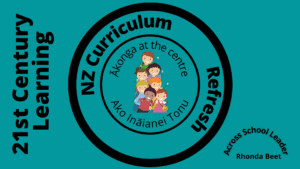
Resources Gallor!
Got a few spare minutes in the holidays? Take some time to look at our Kahui Ako ki Orewa website and some of the new resources up there.
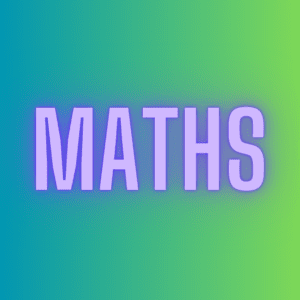
There are a range of maths games you can print off to help consolidate maths skills. You’ll find a range of different games from Year 0 through to Year 8 and potentially beyond.
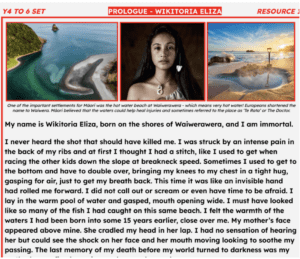
If you haven’t checked out the history resources you’re in for a treat too. Aimed year at year 4 upwards.
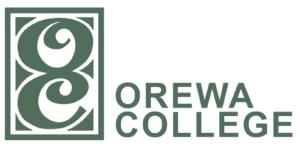
Michelle Caldicott has shared about the Literacy Strategies they are incorporating in Sciences at Orewa College.
Literacy Strategies in Year 9-12 Sciences As we move into the new NCEA environment where students will be assessed on literacy and numeracy in separate assessments, the individual subjects are taking more responsibility for developing literacy across a range of styles and contexts.
In middle school science, we have added tasks that rely on aspects of literacy that relate to the current Nature of Science rubrics. (this might change slightly when the refreshed science curriculum is released). Each UKD document has a range of scaffolded tasks including CLOZE activities, matching key terms and definitions, and sorting sets of sentences into correct order to create an explanation of a scientific process or method. All of these ensure the students are exposed to “good’ scientific language including correctly worded definitions and explanations. The next stage is writing their own definitions, methods and explanations using PEEL to write paragraphs.
The example of Key topic notes given here is designed to be used digitally, and gives a choice of key terms to use correctly.
Key Notes Types of Reproduction
Another technique we use is to give a template for a practical activity, initially partly filled in with Aim and Method, and a “fill the gaps” conclusion, and later versions require the students to fill in more for themselves. A copy of a bare template is given here.
The advent of AI platforms has added extra resources that can be used to enhance literacy and understanding. Very often, science websites and articles are written at a higher level than the reading ability of the class. We have found Diffit.me to be a useful tool to have a piece rewritten at a more suitable level. It is possible to have several versions and give the link of the most suitable to individual students. It also s generate questions and definitions of key terms. Diffit Resources
Kāhui Ako Hui Dates – Term 4 2023
19th October – ASL – Wainui @ 10am – WSL – Orewa College @ 3.30pm
2nd November – ASL – Dairy Flat @ 10am – WSL – Orewa College @ 3.30pm
16th November – ASL – Orewa Beach @ 10am – WSL – Orewa College @ 3.30pm
30th November – ASL – Orewa Primary @ 10am – WSL – Orewa College @ 3.30pm
7th December – ASL – Orewa College @ 10am – WSL – Orewa College @ 3.30pm

